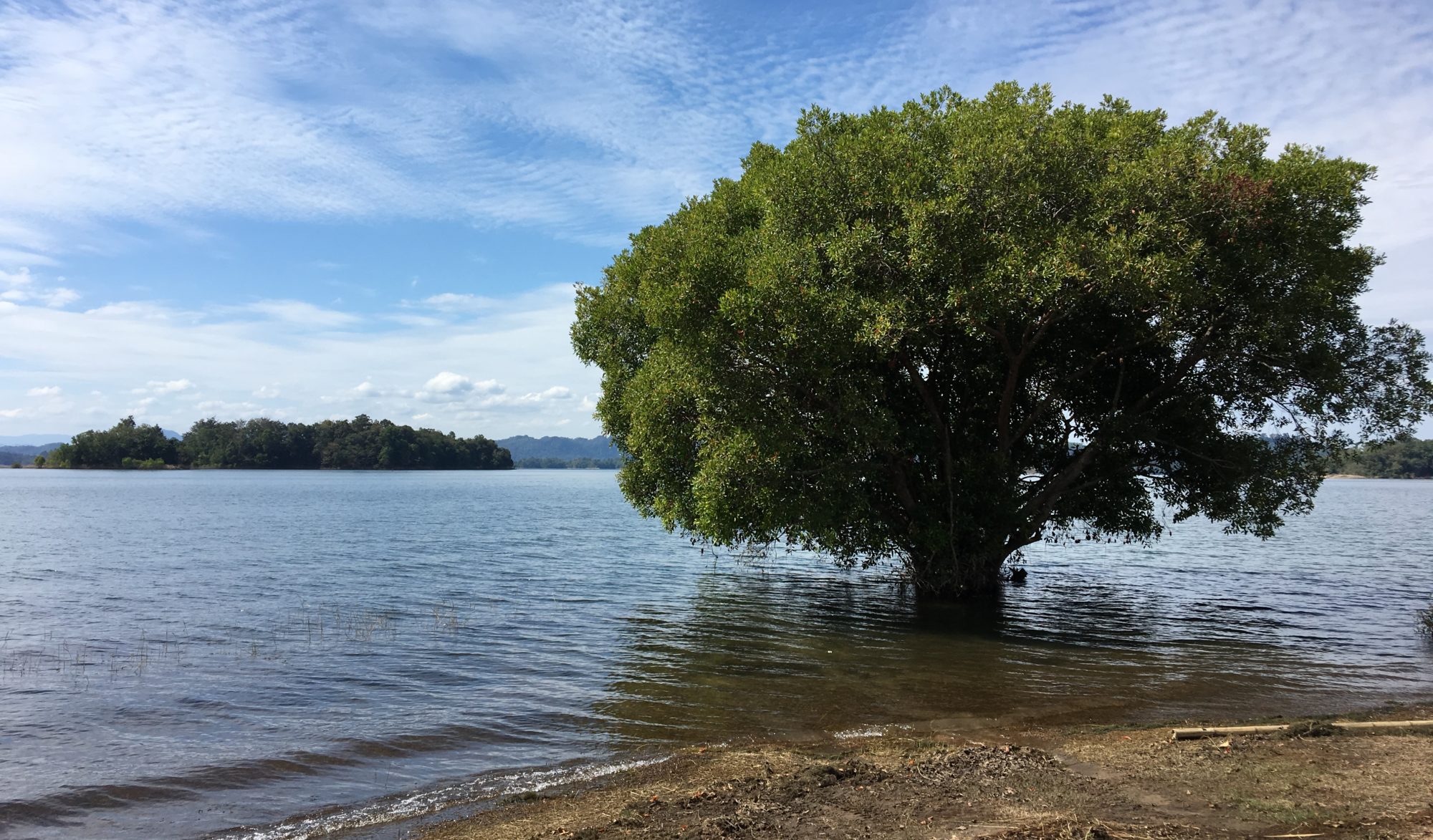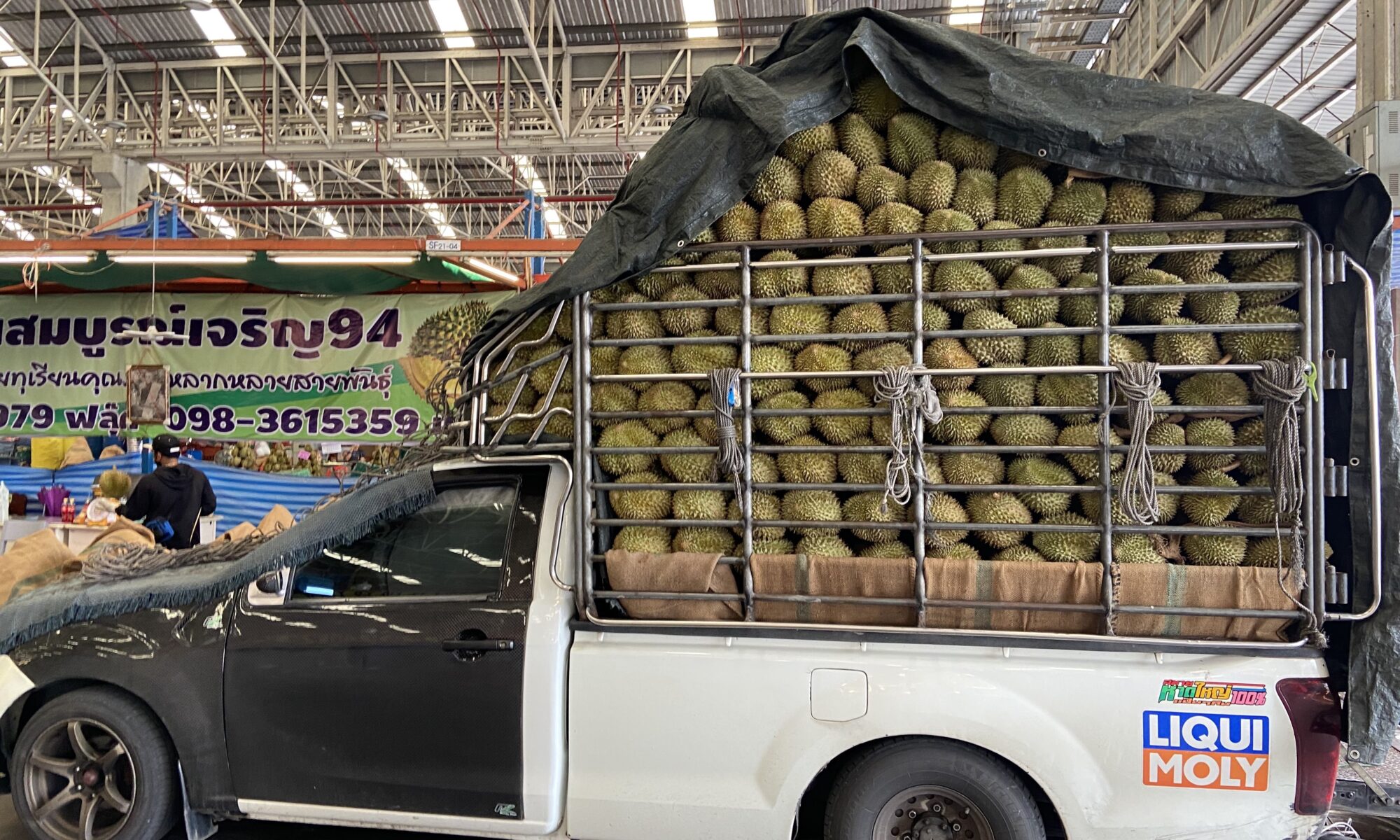It’s that time again.
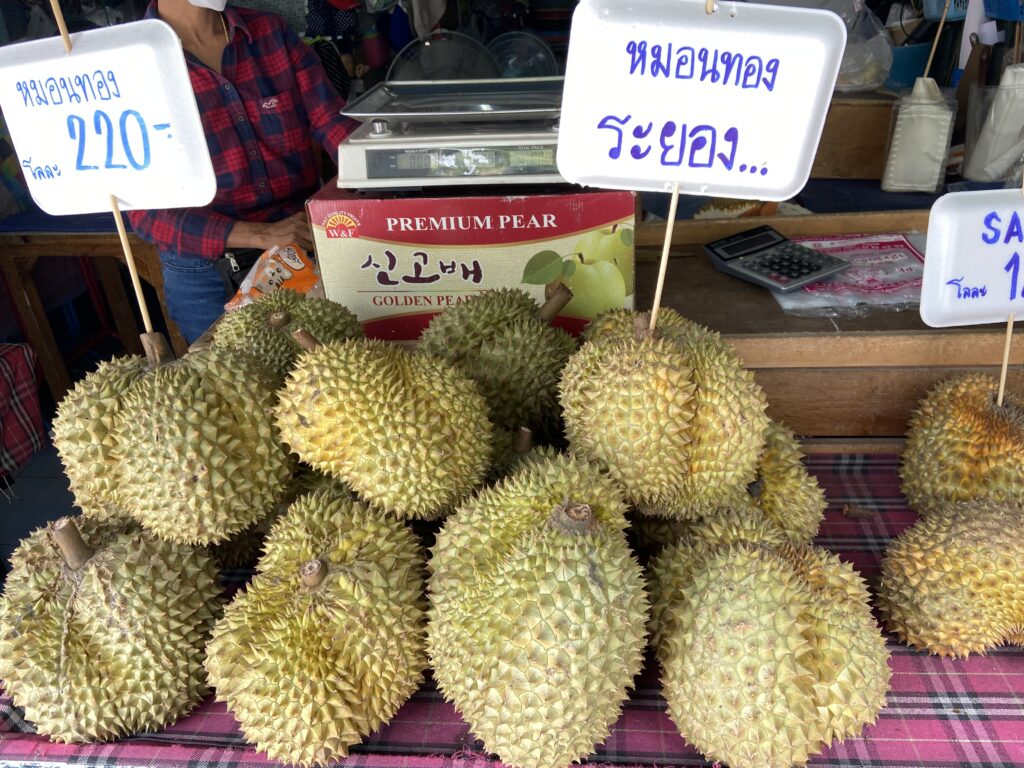
As soon as the first droplet of rain explodes against the cracked Bangkok pavement, it’s almost as if a shockwave shakes the city. The arrival of rainy season means the arrival of the rainy season fruits with their exotic names and exotic shapes and colors of their protective armor. The Big 3 of course are mangosteen, rambutan, and durian. In the world of peculiar fruits, the durian sits alone on its throne.
The lands afar, with magical names like Chanthaburi and Ranong, lined with lush durian orchards are preparing to showcase their prized golden possessions. Underdogs and newcomers to the game, like Srisaket, present their long-armed durians, cultivated in the fertile, volcanic soil.
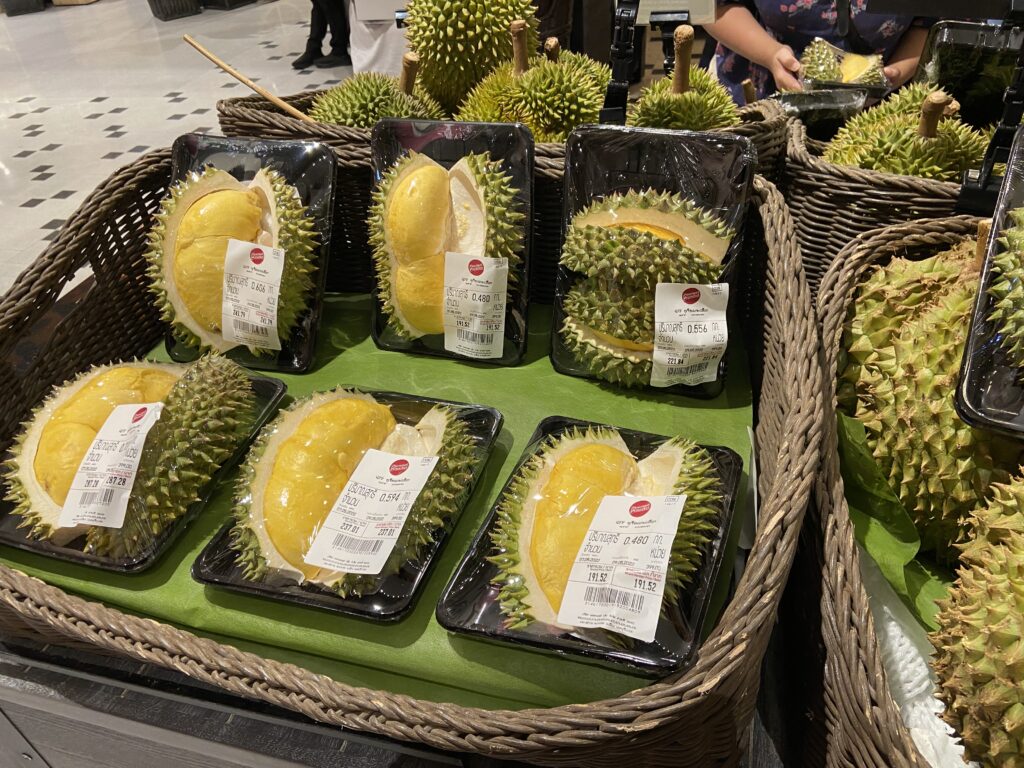
This is the time of year when pickup trucks bask in their glorified moment of absolute practicality. Rusty garages in even the smallest towns are scoured and scouted for trucks that can make the long journey to Bangkok. Some will not be returning home.
There are two camps in this divisive fruit frenzy, and they sit on opposite poles. Those who Love vs Those who Run. If you are a Lover, read on.
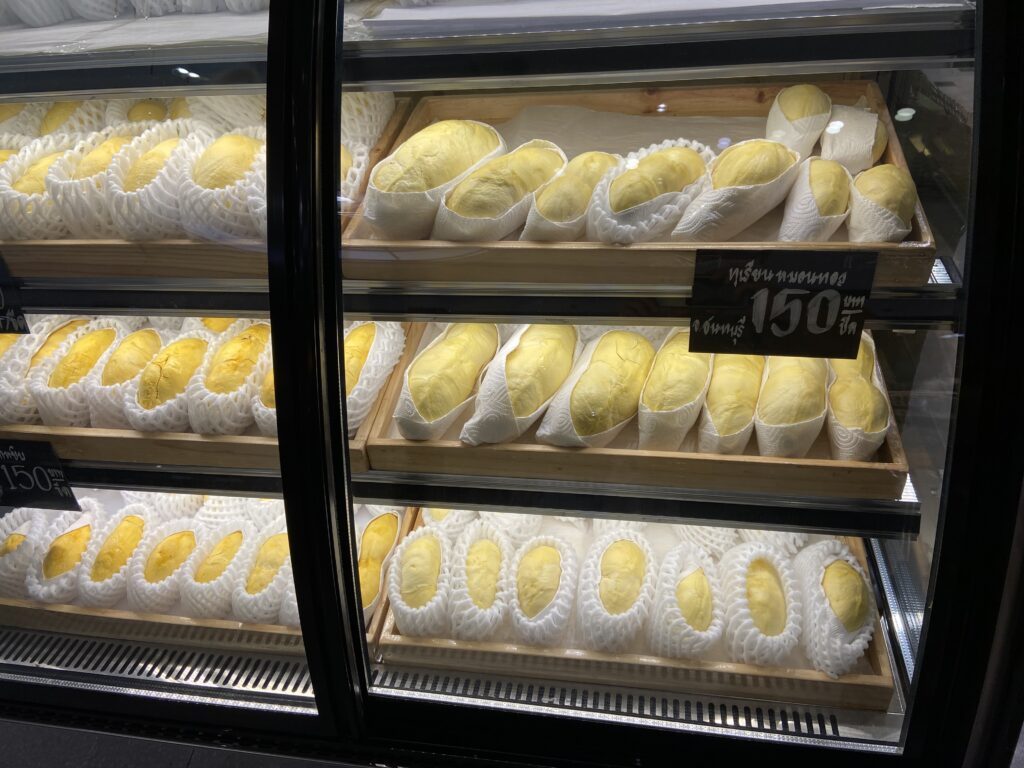
Once the durians arrive in Bangkok, they are most often sold in one of three types of places. In supermarkets, in outdoor markets/roadside stalls, or fresh out of the back of a pickup truck. Most customers retain some loyalty to their vendor. Many of these outdoor, covered setups are closed 8 months of the year, most often covered with tarp and left to collect dust. But when it’s durian season, they come to life, full of hungry customers as passersby develop rubber-neck syndrome. Rival sellers have already taken note of my durian stand, and have parked their durian trucks to leech away wandering customers.
In Bangkok, the most common durian species is known as monthong. This translates directly to golden pillow. But the aficionados will also inform that there are many other species that take on different shapes, sizes, colors, seed sizes, textures, and flavor profiles. Monthong sets a high bar for a good balance of sweet and creamy with a light golden aura. For a smaller durian fruit, with a sweeter, bouncier bite you might be interested in puang mani. The price tag is cheaper, but watch out, a larger seed hides inside. Seasoned durian lovers may opt for a sub-type of monthong, known as Pala-U named after the area its grown in, near Hua Hin. A higher cost of entry is needed to join the exclusive lounge of Club Pala-U.
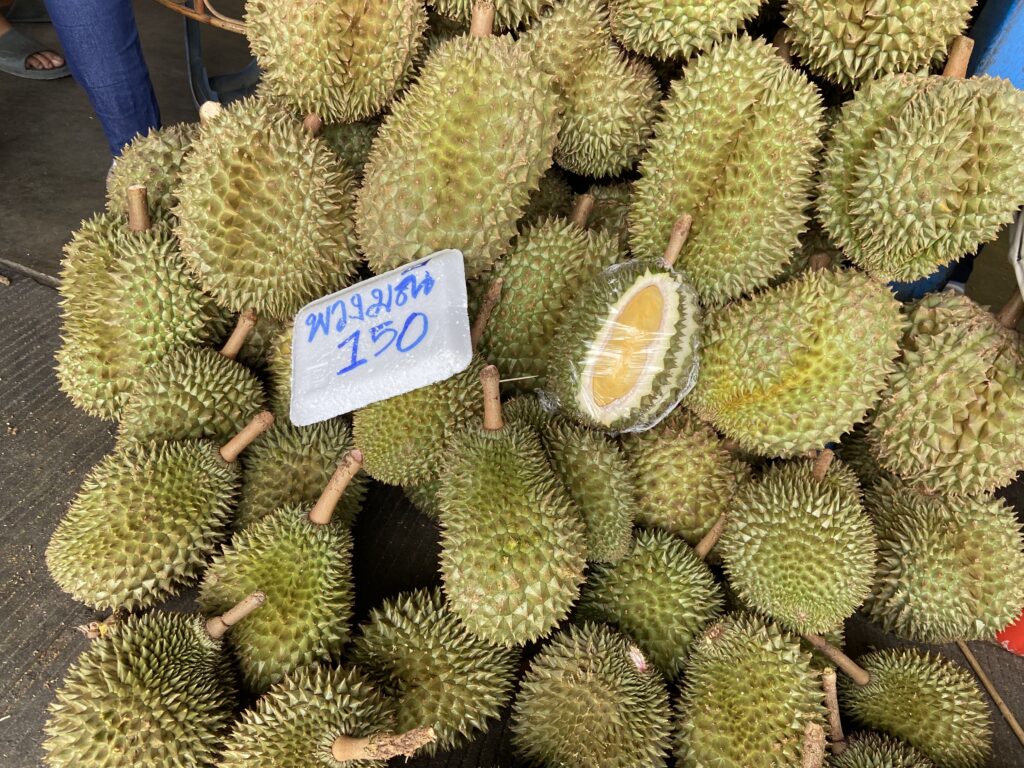
Typically, durians are sold by the kilogram (weighed with the shell on). Standard prices are currently ranging about from 150-250 Thai baht per kilogram. Durians vary in size but are normally around 3 kilograms. This means that for an entire, normal-sized durian you should expect to pay around $15-20 USD. There are serious fluctuations depending on the quality and where you buy it. Tourist zones and supermarkets can easily be double these prices. Wholesale markets and local species can easily be half the price. In some situations, durians are sold by the ขีด or kit, with the price noting the cost per 100 grams (weighed with the shell off).
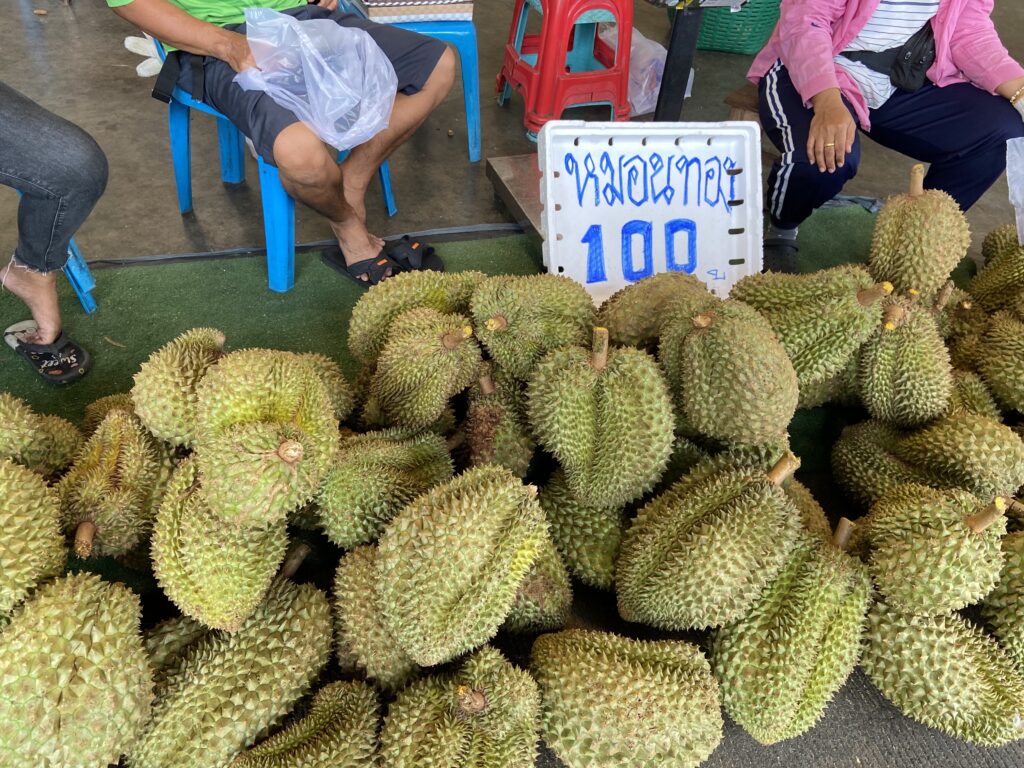
If you have continued reading this far, it is clear that you are not in the Durian Haterz camp.
To all of our comrades, welcome to durian season. The stinkiest time of year. Let’s celebrate.
